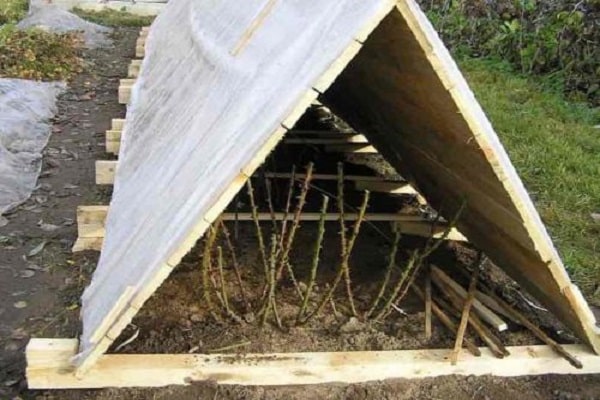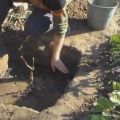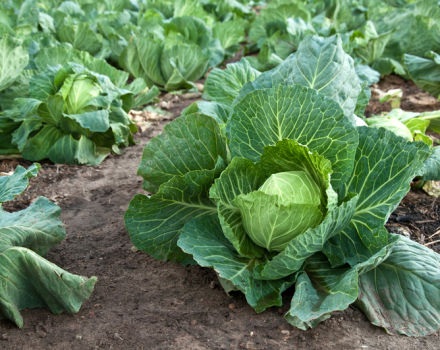How to prepare grapes for winter, the right ways of shelter and insulation
For the safety of the plant, to prevent its freezing, death or disease, it is necessary to know how grapes are sheltered for wintering for winter, taking into account the growing region. But before sheltering, it is important to prune and process the shrub from pests. Only specially carried out measures will help the plant to survive the frosts safely.
Why cover grapes?
Many gardeners are wondering: is it necessary to cover the grapes? It all depends on the region of growth, the severity of winters and the variety of shrubs. It is worth noting! Species unstable to frost, hybrid varieties, young seedlings, complex-resistant shrubs take refuge. Frost-resistant varieties are important to properly prepare for wintering.
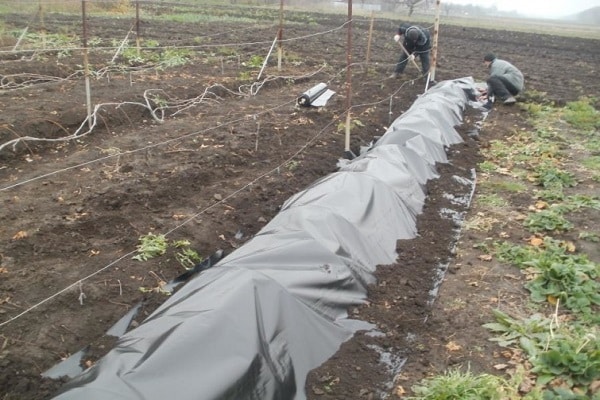
Optimal periods of shelter from frost
First, it is important to decide when to cover the grapes. It is recommended to create a protective layer in the middle of autumn. The timing of sheltering grapes for the winter is determined by the plant variety. A slight decrease in temperature (-5) helps to harden the shrub.
Shelter is made with pre-prepared material, it is important to ensure that the temperature does not drop below 12 aboutFROM.
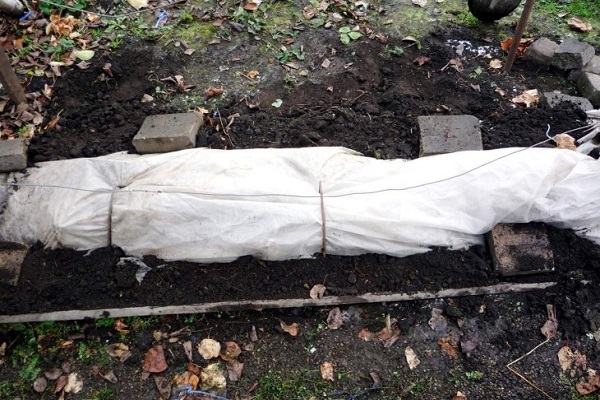
How to properly prepare a grape bush?
For successful wintering, you need to know: how to properly prepare grapes for winter. To do this, he:
- trimmed;
- processed from pests;
- takes cover.
Particular attention is paid to sheltering young grapes for the winter, the thinner the bark, the more carefully you need to treat it.
The shrub planted in the first year is not cut off, not fallen leaves are removed from it. There is no need to apply fertilizers, they were applied at planting.
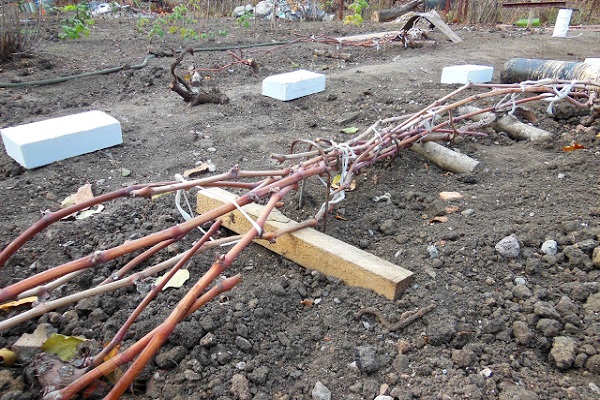
In the Urals
There are certain peculiarities in the preparation of grapes for the harsh winter in this region. It is unacceptable to cut with fruit arrow and replacement knot due to climatic conditions. In March, one can observe sharp changes in temperature, this leads to a slowdown in the development of the first buds.
It is necessary:
- remove all stepchildren, as well as shoots to the lignification site;
- about 12 kidneys are left, no more.
In the first year after planting, the bushes are not pruned, four arms are left, because the cultivation of grapes in this climate is unpredictable.
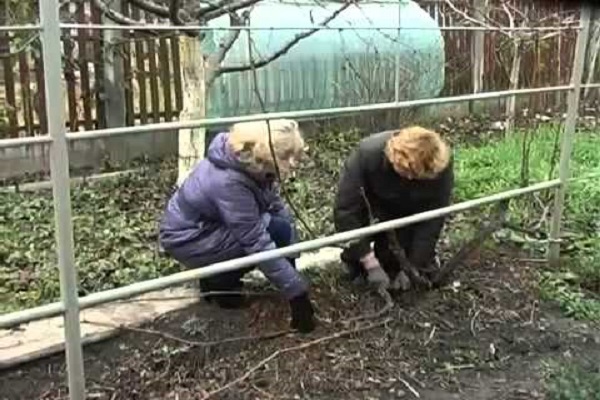
When pruning, young vines growing from the center of the bush are left. It is also important to leave spare branches for replacement, taking into account winter losses, and remove unnecessary eyes in spring.
It is important to carry out katarovka: remove the roots at a depth of 15 cm and fill the hole with sand. Fertilizers are applied, liming is carried out on strongly acidic soil.
Before the onset of frost, the vines are rolled into a ring, bent down and covered with suitable materials.

In Siberia
Preparation for winter begins after harvest. It is necessary to add ash, which contributes to the maturation of the vine and the destruction of spores of fungal diseases. It is important to carry out the cutting correctly, because the freed bush is easier to cover for the winter. 1/3 of spare kidneys must be left.
Before freezing, the vine is removed from the support, bent down and covered. In this region, fallen foliage is the best material for shelter, the soil is covered with boards or sawdust, after which the vine is laid and covered with foliage up to 35 cm thick, non-woven material is laid on top. After that, you need to lay tree branches to retain snow, the thickness of which should be at least half a meter.
A vineyard growing in trenches is laid on the bottom and covered with several layers of agrospan. After it is covered with a wooden shield, you need to put foam plastic, cardboard or polypropylene bags on it. The final layer is roofing material. To prevent heating, side vents are made, which must be closed when stable frosts come.
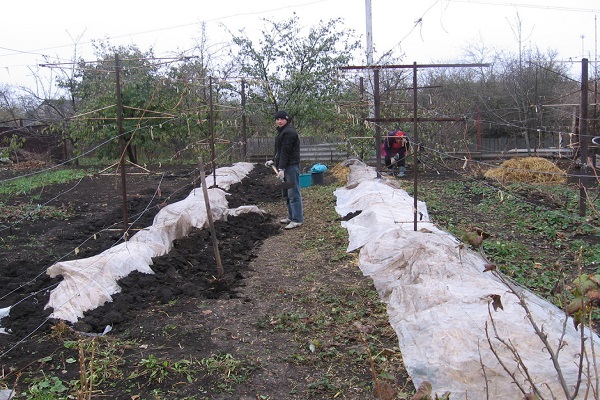
In the middle lane and the Moscow region
In this region, winters are quite mild, the vines prepare for frost a few weeks after the leaves fall. There is no need to wait for the final frost.
For circumcision you need:
- prune young shoots;
- cut off stepsons;
- leave 12 eyes on the boles;
- it is recommended to cut the lower branches, leaving no more than 4 eyes.
To shelter grapes for the winter in the middle lane, it is removed from the supports, bending to the ground, creating a shelter from dry leaves, additional funds (special material, slate sheets, bunches of straw).
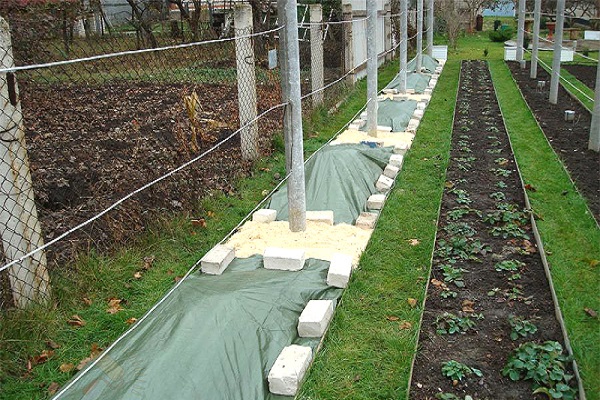
When growing crops in the suburbs, it is important to correctly bend the vine to the ground. It must be ensured that they do not come into close contact with the ground. It is recommended to lay out wooden planks. This will avoid the appearance of condensation, mold, and prevent rotting of seedlings. If desired, you can treat the bush with copper sulfate to protect it from pests.
The following types do not require abundant cover:
- Early North;
- Moscow Stable;
- Jubilee Novgorod.
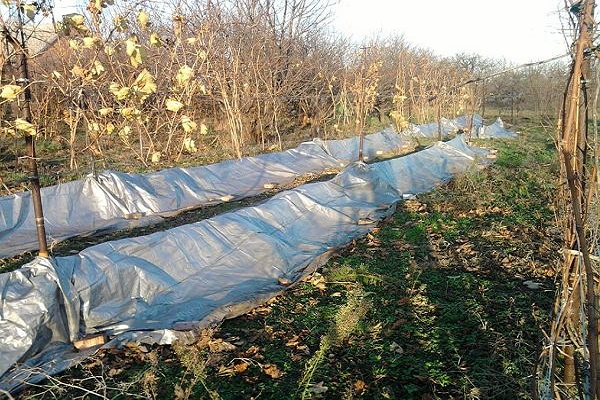
Pruning grapes for the winter
Pruning seedlings is preferably done in the fall to reduce planting and make it easier to bend to the ground. During spring pruning, sap can flow out of the vines, which will cause the culture to be weak, and accordingly, yield will decrease.
In order for the grapes to winter well, they must be properly pruned in the fall. When pruning, non-fruiting vines, damaged or diseased parts, old sleeves or unripe areas are removed, which will freeze in winter and will be the site of infection. It is necessary to leave the replacement knot and the fruit arrow.
Pruning is done twice:
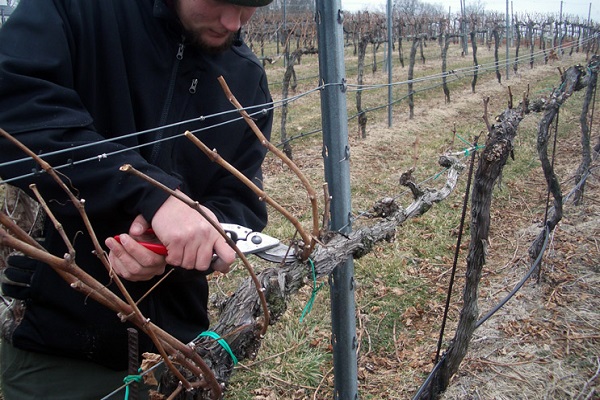
- After harvest, dried and weakened branches are removed.
- After shedding foliage. Work is carried out before the onset of frost, at a temperature of at least 3 aboutC, shoots above 1.5 meters are cut, vines exceeding the second row of wire on the support are cut by 30 cm. The stepchildren are also removed. The lower part of the vine becomes the basis for replacement knots, 4 eyes are left, and on the fruit - up to 12 eyes.
After pruning, it is necessary to treat the vine from pests. Soda-salt solution copes effectively. For 10 liters of liquid, 200 g of salt and 120 g of soda. Lay the vine on the ground and treat it with a solution of ferrous sulfate. After drying, the vine can be covered. To scare away mice, it is recommended to put calcium carbide nearby, absorbing moisture, it releases a gas that scares away mice.
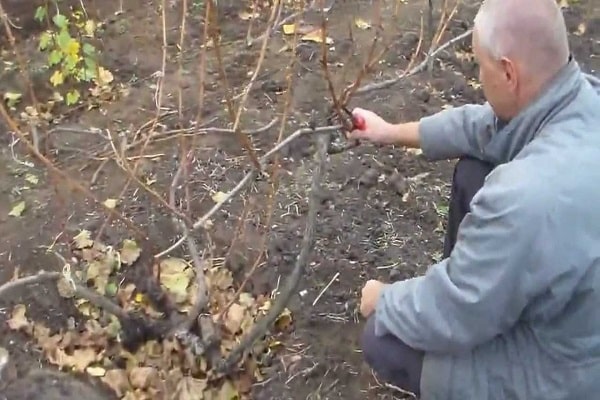
How to protect grapes from frost
So that next year the vine does not hurt and pleases with the new harvest, you need to know how to warm the grapes for the winter.
If the winter temperature is below 20 aboutC, the plant must be protected. An important rule before shelter is processing with iron (can be replaced with copper) vitriol.
The vine must be bent to the ground and dug on top with moistened earth. You cannot take soil next to the vine, the roots will be exposed, and they will freeze.
Some gardeners, telling how to properly shelter grapes for the winter, advise using the air-dry method. To do this, a plastic burlap is put on the collected bundles of shoots, after which the plant must be dug in with earth. It is recommended to ventilate periodically, opening the shelter for a short time.
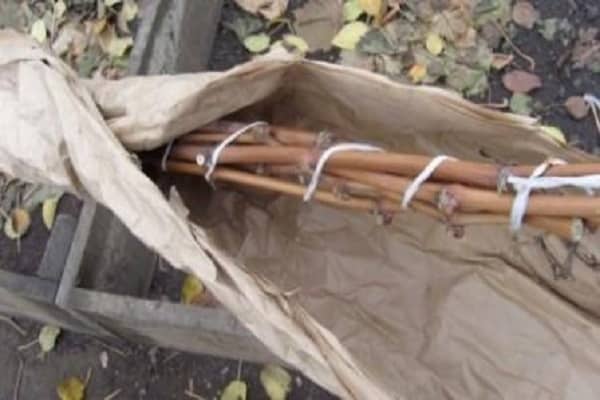
Covering material for grapes for the winter can be different materials: leaves, sawdust, straw, non-woven coverings, wooden boards, boxes. The material of the shelter depends on the growing area, the severity of winters and the type of plant. Some modern varieties are able to withstand frost under light cover.
In the northern regions, coniferous spruce branches are abundant, it allows air to pass through perfectly, rotting processes do not occur. It retains snow well, creating favorable conditions for wintering.
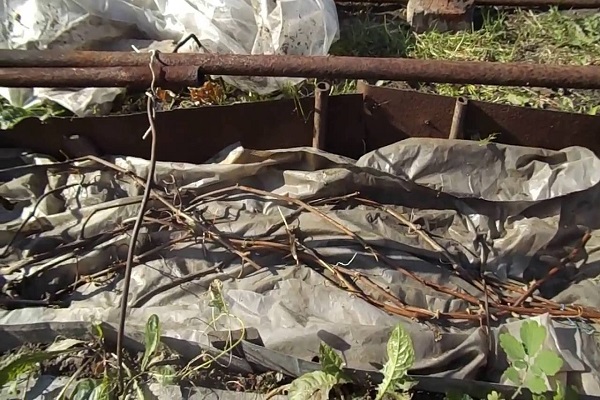
If the plant is grown in trenches, it is convenient to insulate it with wooden shields. Air circulation is ensured between the boards. The fallen snow prevents freezing. In the absence of snow and frost, it is recommended to cover the boards with non-woven material.
Important! It is not recommended to use a polyethylene film for shelter, as high humidity is created under it, there is no ventilation. Sudden changes in temperature can cause condensation to form, leading to mold growth.

There are the following ways of sheltering grapes for the winter:
- semi-shelter - applicable in the southern regions;
- full cover - used in regions with harsh winters;
- snow;
- land;
- dry shelter - using slate, boxes, roofing material.
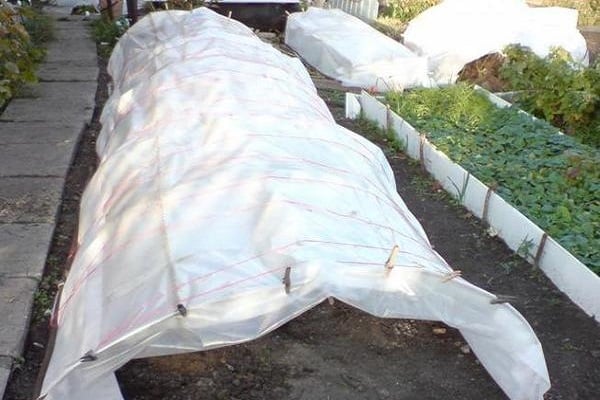
Covering grapes with slate is done if there are extra sheets left after construction. To do this, you need to dig a ditch along the bush to a depth of 20 cm, wrap the vine with burlap, bend it to the ground and cover it with a sheet of slate.
Any of the correct covering methods will help the vine to survive the frost and yield the next season.
